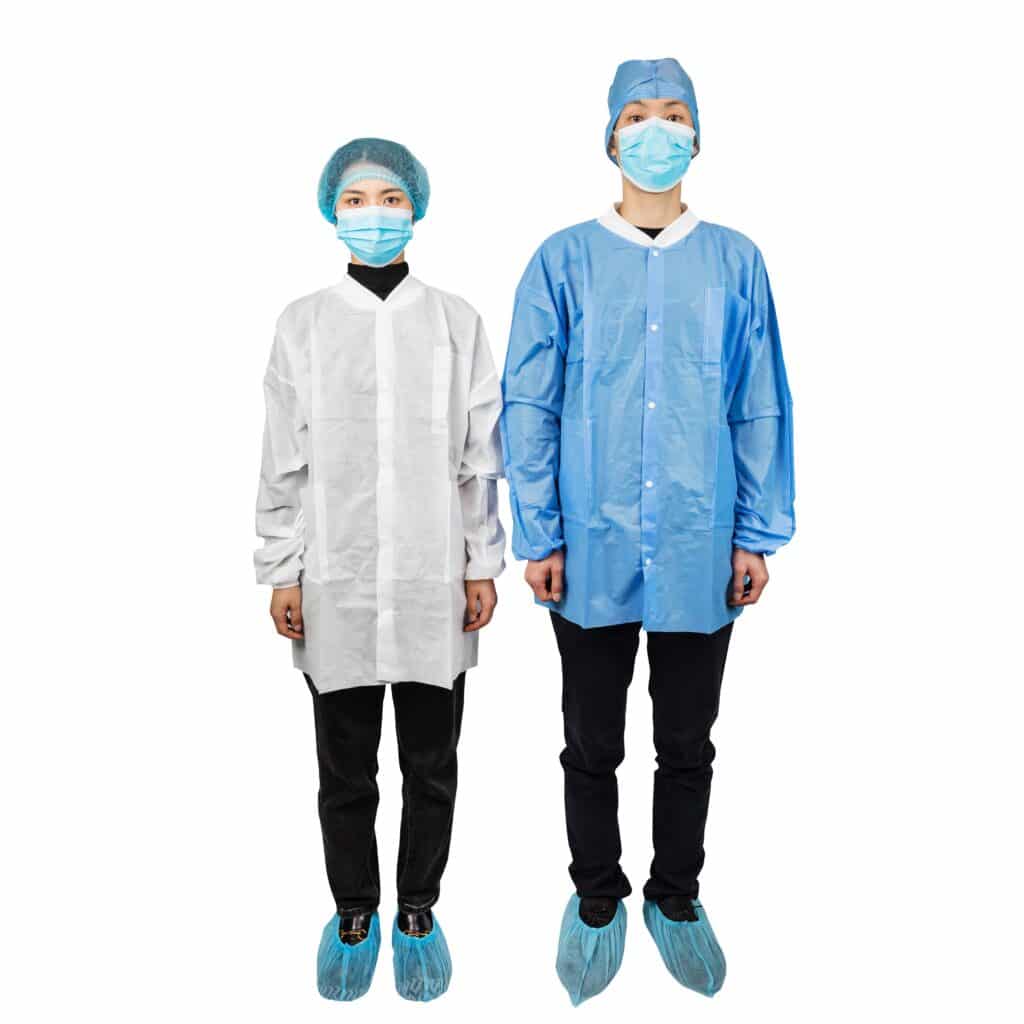Have you ever wondered, “What are disposable lab coats made of?”
Basics of Lab Coats
A lab coat, the iconic symbol of scientists and medical professionals, is more than just a wardrobe staple. It plays a critical role in providing protection against potential hazards in the lab environment.

The Need for Disposable Lab Coats
In certain settings, disposable lab coats are preferred over their reusable counterparts. They are designed to be worn once and then discarded, helping to prevent cross contamination and providing an extra layer of protection against hazardous materials.
Materials Used in Disposable Lab Coats
Polypropylene Lab Coats
One common material used in disposable lab coats is polypropylene. Known for its lightweight, breathable properties, polypropylene lab coats offer good protection against dry particulates and are cost effective.

SMS Nonwoven Lab Coats
Another popular material is SMS (spunbond-meltblown-spunbond) nonwoven. These lab coats provide a higher level of fluid resistance, making them ideal for environments where exposure to bodily fluids or water-based liquids is a concern.
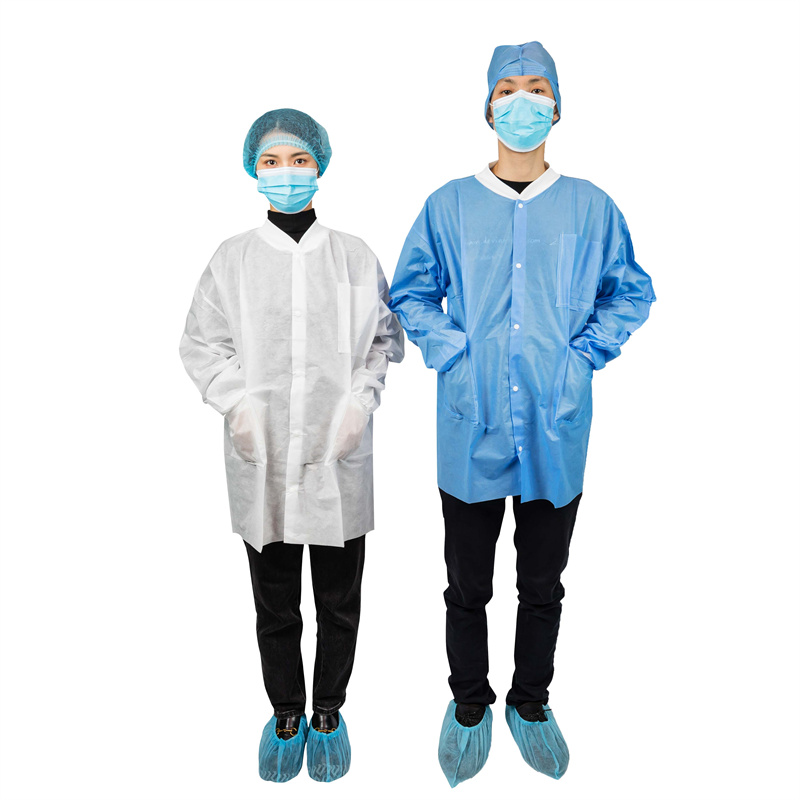
Microporous Lab Coats
Microporous lab coats, often made with a microporous film over a layer of spunbonded polypropylene, provide a waterproof barrier protection. They are ideal for environments where exposure to small hazardous particles or hazardous chemicals is a concern.
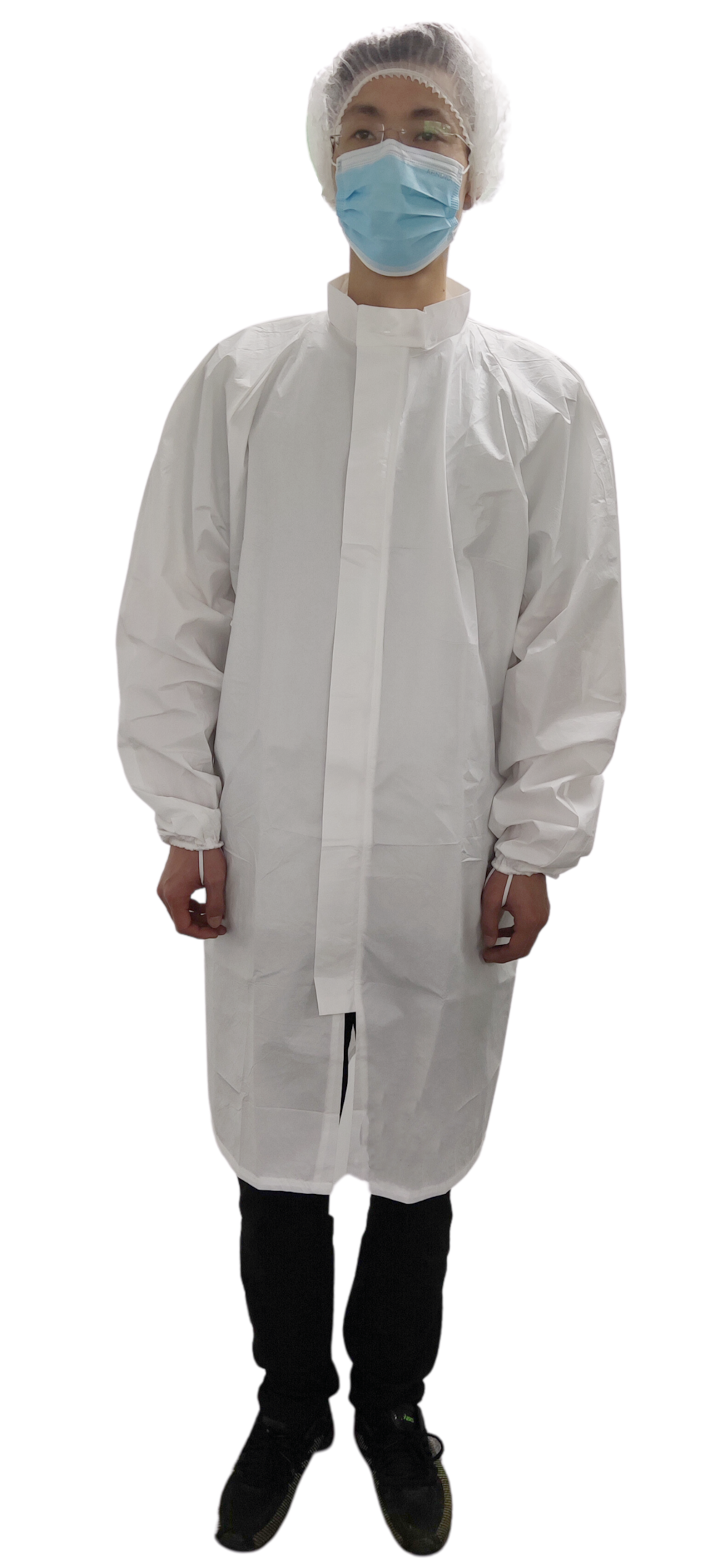
Features of Disposable Lab Coats
Fluid Resistant
Most disposable lab coats are designed to be fluid resistant. This provides an inherent barrier to fluids, helping to protect the wearer’s skin and clothing from potential exposure.
Anti-Dust
The non-woven material used in disposable lab coats also provides an anti-dust barrier, preventing dirt and other particles from penetrating the coat.
Chemical Resistant
Certain disposable lab coat materials, like microporous film, offer chemical resistance. This makes them suitable for use in environments where there might be exposure to hazardous chemicals.
Fire Retardant
Some disposable lab coats are treated to be fire retardant, offering protection in environments where flammable materials may be present.
Anti-Static
Many lab coats are designed to be anti-static, an important feature in environments where static electricity could pose a risk.
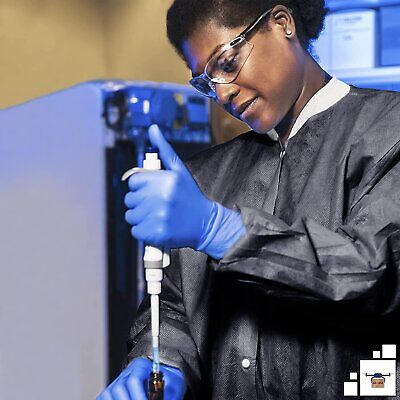
Design and Closure of Disposable Lab Coats
Front Snap Closures
Disposable lab coats often feature front snap closures for easy donning and doffing. This design ensures a secure fit and full body coverage.
Elastic Wrist or Knit Wrists
Many disposable lab coats feature elasticated cuffs or knit wrists for a snug fit, providing extra protection by preventing sleeves from sliding up the arms during use.
Three Pockets
Most disposable lab coats have three pockets – two at the sides and one at the chest. These provide convenient storage for small tools or personal items.

The Role of Disposable Lab Coats in Different Industries
การแปรรูปอาหาร
In food processing industries, disposable lab coats are essential to prevent cross contamination, ensuring safe and hygienic handling of food products.
Pharmaceutical Environments
In pharmaceutical environments, where cleanliness and sterility are paramount, disposable lab coats provide an effective barrier against potential contaminants.
Cleanroom Environment
In cleanroom environments, where even minute particles can compromise results, disposable lab coats help maintain the necessary conditions by reducing the risk of contamination.
Science Institutions
In science institutions, disposable lab coats provide protection against potential exposure to chemical spills, infectious diseases, and other hazards.

Wuhan Youfu’s Contribution to the Disposable Lab Coats Market
Wuhan Youfu, a leading provider of protective clothing, has made significant contributions to the disposable lab coat market. Their lab coats, known for their durability and excellent protective features, are widely used in various industries. Wuhan Youfu’s lab coats are made from high-quality materials like polypropylene and SMS nonwoven, offering a blend of comfort, protection, and cost-effectiveness.
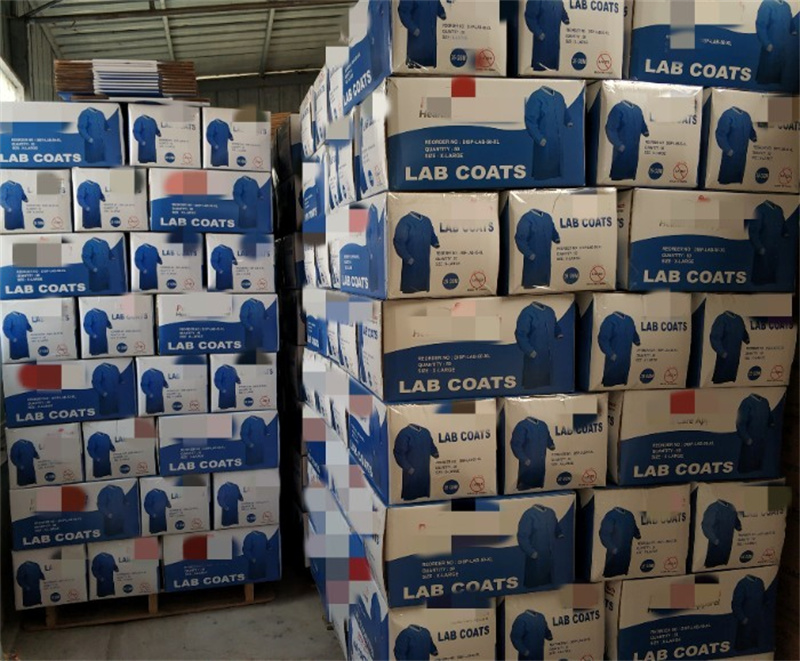
Comparison of Disposable Lab Coats and Reusable Lab Coats
While reusable lab coats can be laundered and reused, disposable lab coats are designed for single-use, reducing the risk of cross-contamination. However, both types have their benefits and the choice often comes down to the specific requirements of the task at hand.
The Eco-Friendly Aspect of Disposable Lab Coats
While disposable lab coats may seem wasteful at first glance, many are made from eco-friendly materials and can be recycled. This makes them a greener choice than might initially be apparent.
The Cost-Effective Nature of Disposable Lab Coats
Despite the single-use design, disposable lab coats are often more cost-effective than reusable ones. They eliminate the need for laundering, and because they are often made from less expensive materials like polypropylene or SMS nonwoven, their initial cost is often lower.
บทสรุป
In conclusion, disposable lab coats are made from a variety of materials, each offering different levels of protection. Choosing the right one depends on the specific requirements of the job and the potential hazards present in the work environment.
คำถามที่พบบ่อย
- What are disposable lab coats made of?
Disposable lab coats are made from various materials, but polypropylene, SMS nonwoven, and microporous film are the most common. - Why choose a disposable lab coat over a reusable one?
Disposable lab coats are often preferred in environments where there’s a high risk of cross-contamination. They’re designed for single use, which can help minimize this risk. - Do disposable lab coats offer protection against chemicals?
Yes, some disposable lab coats, like those made from microporous film, offer chemical resistance. - Are disposable lab coats eco-friendly?
Many disposable lab coats are made from eco-friendly materials and can be recycled, making them a greener choice than you might think. - Are disposable lab coats cost-effective?
Yes, disposable lab coats are often more cost-effective than reusable ones. They eliminate the need for laundering and their initial cost is often lower.

